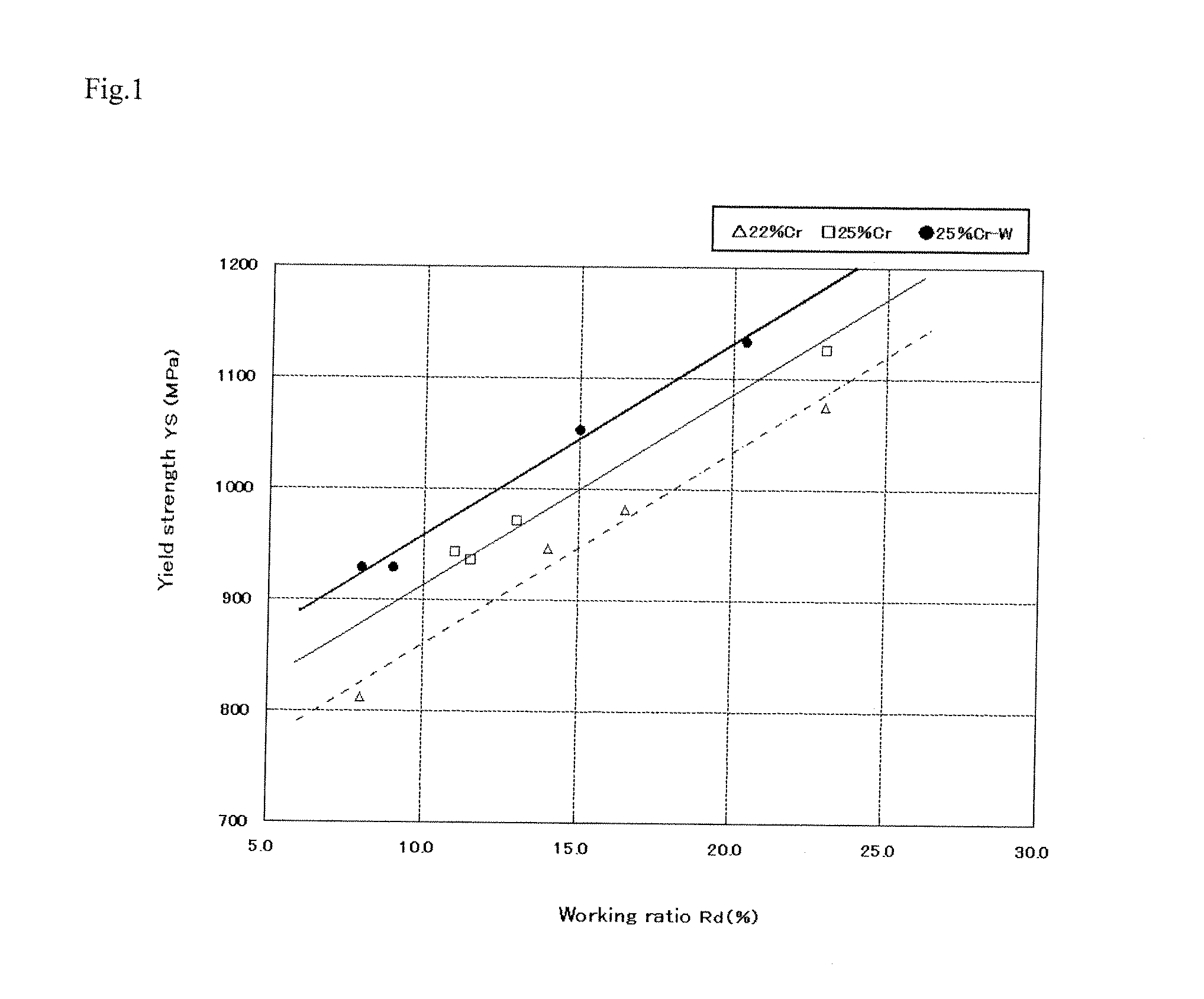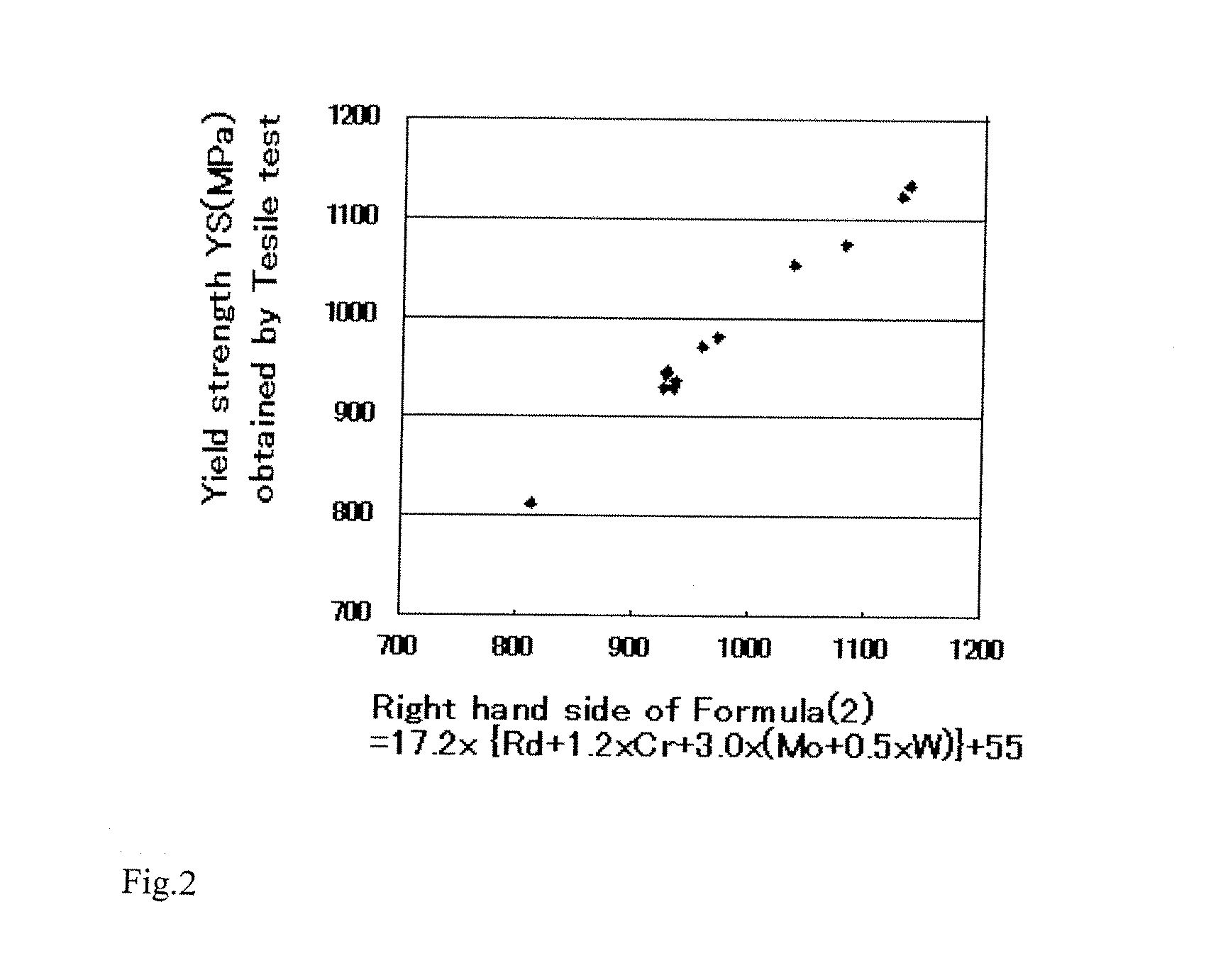Method for Producing Two-Phase Stainless Steel Pipe
a technology of stainless steel pipe and two-phase, which is applied in the direction of manufacturing tools, furnaces, heat treatment equipment, etc., can solve the problem of not offering suggestions regarding the appropriate composition design, and achieve the effect of improving strength, reducing the risk of corrosion, and improving pitting resistance and crevice corrosion resistan
- Summary
- Abstract
- Description
- Claims
- Application Information
AI Technical Summary
Benefits of technology
Problems solved by technology
Method used
Image
Examples
example 1
[0056]First, the two-phase stainless steels having the chemical compositions shown in Table 1 were melted with an electric furnace, and were regulated with respect to the components so as to have approximately the intended chemical compositions, and thereafter, the melting was performed by a method in which by using an AOD furnace, a decarburization treatment and a desulfurization treatment were conducted. Each of the obtained molten steels was cast into an ingot having a weight of 1500 kg and a diameter of 500 mm. Then, the ingot was cut to a length of 1000 mm to yield a billet for use in the extrusion pipe production. Next, by using this billet, a material pipe for cold drawing was formed by the hot extrusion pipe production method based on the Ugine-Sejournet method.
[0057][Table 1] Below
TABLE 1TestChemical compositions (mass %. the balance being Fe and impurities)No.CSiMnPSCrNiMoWCuN10.0140.310.490.0250.000525.156.693.082.120.480.28520.0160.330.470.0190.000524.726.553.082.130.460...
PUM
| Property | Measurement | Unit |
|---|---|---|
| yield stress | aaaaa | aaaaa |
| tensile strength | aaaaa | aaaaa |
| yield strength | aaaaa | aaaaa |
Abstract
Description
Claims
Application Information
 Login to View More
Login to View More - R&D
- Intellectual Property
- Life Sciences
- Materials
- Tech Scout
- Unparalleled Data Quality
- Higher Quality Content
- 60% Fewer Hallucinations
Browse by: Latest US Patents, China's latest patents, Technical Efficacy Thesaurus, Application Domain, Technology Topic, Popular Technical Reports.
© 2025 PatSnap. All rights reserved.Legal|Privacy policy|Modern Slavery Act Transparency Statement|Sitemap|About US| Contact US: help@patsnap.com


